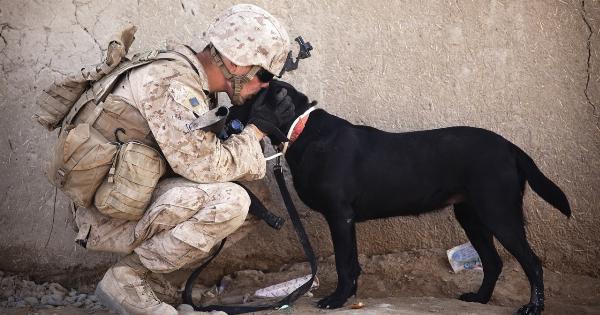Dogs are highly susceptible to heat stroke, a potentially life-threatening condition that occurs when their body temperature rises significantly above normal.
Heat stroke can cause irreversible damage to their organs and can even be fatal if not treated promptly. As responsible dog owners, it is crucial to be aware of the signs and symptoms of heat stroke in dogs to ensure their well-being, especially during hot weather or when engaging in intense physical activities.
What Is Heat Stroke?
Heat stroke, also known as hyperthermia, is a condition that occurs when a dog’s body temperature exceeds its ability to regulate it effectively.
Unlike humans, dogs cannot sweat profusely to cool down; instead, they rely on panting and limited sweat glands on their paws to release heat. When a dog’s core body temperature rises rapidly, their normal cooling mechanisms become overwhelmed, leading to heat stroke.
Causes of Heat Stroke in Dogs
Several factors can contribute to the onset of heat stroke in dogs:.
- Hot weather: Dogs are more susceptible to heat stroke during hot and humid weather, especially if they are exposed to direct sunlight with limited access to shade and water.
- High humidity: Dogs struggle to cool down effectively in humid environments as the moisture in the air prevents efficient evaporation of moisture from their bodies.
- Overexertion: Engaging in excessive exercise, especially in hot weather, can rapidly increase a dog’s body temperature and lead to heat stroke.
- Being confined in a hot car: Leaving a dog in a parked car, even for a short period, can cause their body temperature to rise rapidly, leading to heat stroke.
Signs and Symptoms of Heat Stroke in Dogs
Recognizing the signs of heat stroke in dogs is crucial as early intervention can significantly improve their chances of recovery. The common symptoms include:.
- Excessive panting: Dogs pant to regulate their body temperature, but excessive and rapid panting can indicate heat stroke.
- Dehydration: Dry or tacky gums, sunken eyes, and decreased skin elasticity are signs of dehydration in dogs.
- Excessive drooling: Severe heat stroke can cause dogs to drool excessively, often thick and ropey saliva.
- Increased heart rate: A rapid heart rate is a response to the body’s attempt to cool down.
- Bright red or pale gums and tongue: Abnormal gum and tongue colors can indicate heat stroke and require immediate attention.
- Vomiting and diarrhea: Heat stroke can cause gastrointestinal distress, leading to vomiting and diarrhea.
- Unsteady or wobbly gait: Dogs suffering from heat stroke may appear disoriented, have trouble standing, or display a lack of coordination.
- Seizures or collapse: In severe cases, dogs may experience seizures due to the extreme elevation in body temperature.
- Unresponsiveness or lethargy: Dogs with heat stroke often become unresponsive, weak, or lethargic.
- Dark urine: Concentrated urine or the absence of urination can indicate dehydration resulting from heat stroke.
Emergency Actions for Heat Stroke
If you suspect your dog is suffering from heat stroke, immediate action is essential to prevent further complications:.
- Move to a cool area: Get your dog to a shaded or air-conditioned area as quickly as possible.
- Provide cool water: Offer your dog small sips of cool water or, if possible, allow them to drink as much as they desire.
- Cooling measures: Wet your dog’s body with cool (not cold) water, especially their abdomen, armpits, and paw pads. Avoid using ice-cold water as it can constrict blood vessels and hinder the cooling process.
- Use a fan or air conditioning: Maximizing air circulation can aid in the cooling process.
- Contact your veterinarian: Even if your dog’s condition seems to improve, it is crucial to seek veterinary care. Internal damage or delayed complications can still occur.
Preventing Heat Stroke in Dogs
Prevention is always better than cure when it comes to heat stroke. Here are some measures to protect your dog from this potentially dangerous condition:.
- Avoid exercising during peak heat: Restrict intense physical activities to cooler parts of the day, like early morning or late evening.
- Provide ample shade: Ensure your dog has access to shady areas, such as trees, covered patios, or a well-ventilated doghouse.
- Keep cool water always available: Offer your dog plenty of fresh and cool water to drink at all times.
- Avoid hot pavement: Walking your dog on hot pavement can burn their paw pads. Opt for grassy or shaded areas instead.
- Avoid leaving dogs in parked cars: Never leave your dog unattended in a parked car, even with windows cracked. It can lead to overheating within minutes.
- Recognize high-risk breeds: Brachycephalic breeds, like Bulldogs and Pugs, are more susceptible to heat stroke due to their compromised breathing ability.
Conclusion
Heat stroke in dogs is a serious condition that requires immediate attention.
By recognizing the signs and symptoms, understanding the underlying causes, and taking preventive measures, you can help keep your furry friend safe during hot weather or strenuous activities. Always remember that when it comes to heat stroke, time is of the essence, and contacting your veterinarian is crucial for the best chance of recovery.






























